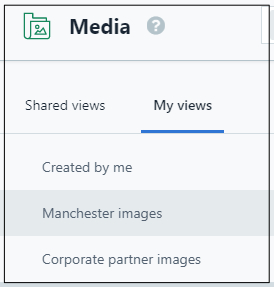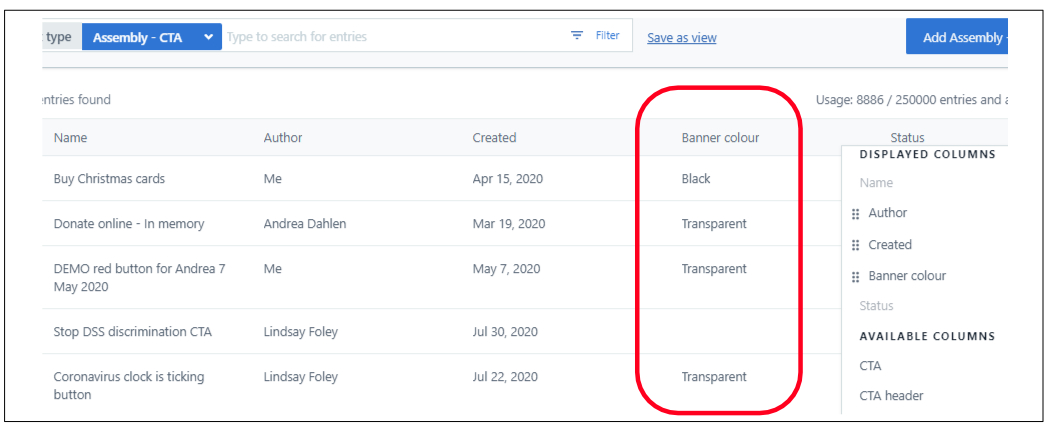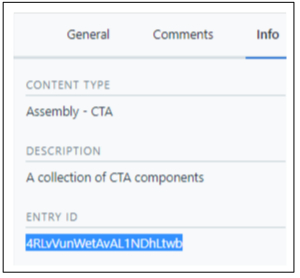Finding your content
If you’ve worked on other CMSs before, chances are you navigated a tree hierarchy to find your pages, assets, files and so on.
Contentful is different. It’s a flat, non-hierarchical sea of content blocks, built together to form other content including pages. Some content is nested within other content, like an image within a content card or a banner within a page – but there's no real hierarchy between content. It’s all just linked together.
Thankfully, Contentful has a powerful search function. Whether it’s the main content list on the dashboard (image below), finding a destination page when creating a hyperlink, or looking for a media asset, Contentful’s search is strong in 3 ways:
Effortless and quick. Using a combination of the content type dropdown and a few characters of a keyword, the CMS will return what you’re looking for without even hitting enter.
Contextual. Contentful will only show you search results for the content that fits where you’re trying to add it.
Filters are ever-present. For any search you make, you have the option to filter by many criteria: date first published or last updated, author, entry ID, title and many more.
Searching the full list

In the dashboard’s main content list you’ll see every content entry that’s been created in your space, in either published, changed or draft state. The power tools for finding your content quickly and reliably are:
Content type dropdown – If you need to find an Advice page for instance, change the dropdown to ‘Page – Advice’ to view only those content entries for that type.
Keyword search – Once you start to type the first characters of a keyword, the content list reduces to the entries that match. It searches fields like content names/titles of content and any text within the content.
Filters – If you need to further refine your search, filters give you a range of options. Narrow your search by author, date published, date created, status, header, banner colour – the list goes on. If you want to remove a filter, place your cursor after it and hit backspace.
TIP: Using content IDs. Let’s say you need to find a CTA assembly named ‘Donate now’, but there are 8 CTA assemblies with that exact vague name. Contentful gives every component a unique ID. Go to other content that uses the component you want, select that component and click its Info tab in the sidebar. You’ll find its entry ID, which you can then use in a search with the ID filter.

Save as view – You’ll quickly find yourself doing the same searches again and again. Use Save as view to always have that search to hand in your left sidebar. Save your search in My views or Shared views, which lets you define the Contentful roles that can see it.
When any new content is created that meets the exact criteria and filters of your saved search, the view will update to include it.
TIP: If you delete any saved views, you’ll need to refresh your browser window to remove the view.
Organising your columns
You can change which columns appear in your dashboard’s content list and change the order (left to right) in which they appear. Click the columns cog upper right next to the column headings.
In the window that appears, click the plus icon for a category under HIDDEN COLUMNS to add it to VISIBLE COLUMNS. Click-drag on a category’s six dots to change its position.
By default, the displayed columns include:

Name of the content, a permanent column. (If the content type doesn’t have a name field, it will display ‘title’.)
Status of each content entry: published, draft or changed. Status is also a permanent field.
Updated date
Last updated by: the last person to publish the entry
The default available columns you can add include Content type, Created (date) and Published (date).
You can also use the columns cog to add columns specific to whatever content type you have the dropdown (above the content list) set to. So if your dropdown is set to Assembly - CTA and you want to see all the colours for those entries, click the columns cog, find Banner colour under Hidden columns and click to add it to your columns.

Any questions? Email Lindsay Foley in the Central Digital team.


